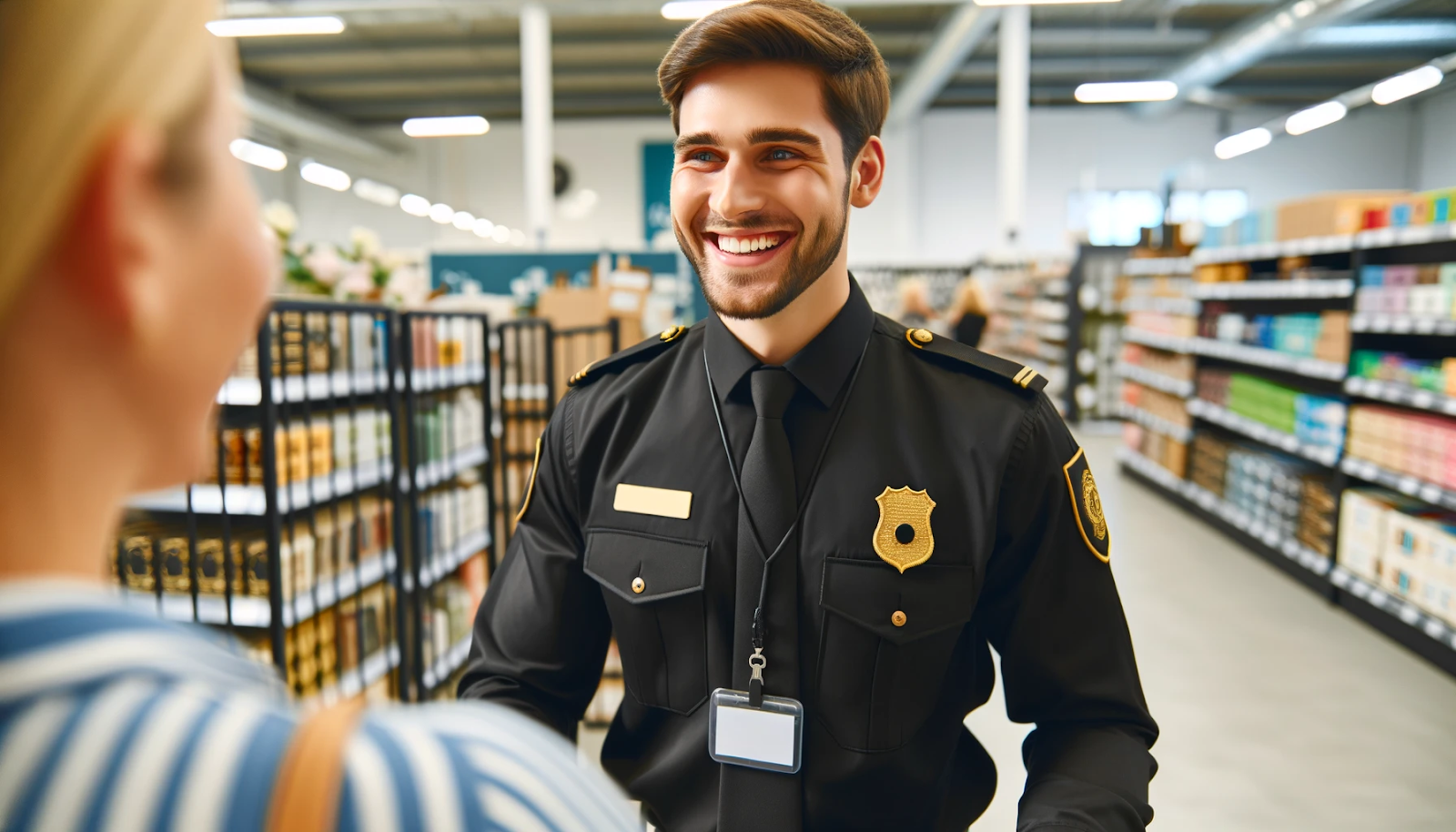Developing comprehensive security policies and procedures tailored to the retail environment is crucial for ensuring the safety of customers, employees, and assets. Understanding the key components and strategies for effective retail security can benefit property managers, chief security officers, and security company hiring managers.
Understanding the Retail Security Landscape
Retail environments are unique due to their open nature and high volume of foot traffic. Security challenges include theft, vandalism, and the safety of both employees and customers. Therefore, a robust security policy must address these specific concerns comprehensively.
Key Components of Retail Security Policies
- Access Control
- Employee Access: Clearly define who has access to different areas of the store.
- Customer Access: Ensure public areas are monitored and restricted zones are off-limits.
- Surveillance Systems
- CCTV Cameras: Install cameras at key entrances, exits, and high-value areas.
- Monitoring: Implement a live monitoring system with trained personnel.
- Incident Response Plan
- Emergency Procedures: Establish procedures for various emergencies (e.g., fire, active shooter, medical emergencies).
- Communication Plan: Develop a clear communication strategy for staff during an incident.
- Loss Prevention
- Theft Deterrence: Use tags, alarms, and visible security presence to deter theft.
- Inventory Management: Regularly audit inventory to identify and address discrepancies.
- Training and Awareness
- Employee Training: Provide regular training on security procedures and emergency responses.
- Customer Awareness: Educate customers on their role in maintaining a secure environment.
Developing a Tailored Security Plan
Assessing Risks and Vulnerabilities
Conduct a thorough risk assessment to identify potential security threats specific to the retail environment. This includes analyzing past incidents, evaluating current security measures, and identifying high-risk areas.
Implementing Technology Solutions
Leverage technology to enhance security. Modern solutions like AI-powered surveillance systems and automated access control can significantly improve the effectiveness of security measures.
Creating a Security Culture
Fostering a culture of security within the retail environment is vital. This involves:
- Encouraging employees to report suspicious activities.
- Promoting teamwork in maintaining security.
- Recognizing and rewarding employees who contribute to a safe environment.
Regular Review and Update of Policies
Security policies should be dynamic, evolving with new threats and technological advancements. Regularly review and update security measures to ensure they remain effective and relevant.
Table: Retail Security Policy Checklist
|
Security Aspect |
Key Actions |
Frequency |
|
Access Control |
Review access permissions update as needed |
Monthly |
|
Surveillance Systems |
Check camera functionality, update software |
Bi-weekly |
|
Incident Response Plan |
Conduct drills, review procedures |
Quarterly |
|
Loss Prevention |
Audit inventory, review deterrents |
Monthly |
|
Training and Awareness |
Conduct training sessions, update materials |
Bi-monthly |
FAQs
Q: What are the essential elements of a retail security policy? A: Key elements include access control, surveillance systems, an incident response plan, loss prevention strategies, and regular training.
Q: How often should security policies be reviewed? A: Security policies should be reviewed quarterly to ensure they are up-to-date with the latest threats and technologies.
Q: What role does technology play in retail security? A: Technology, such as CCTV cameras and AI-powered systems, plays a crucial role in monitoring, deterring theft, and ensuring quick response to incidents.
Q: Why is employee training important in retail security? A: Employees are the first line of defense in a retail environment. Regular training ensures they are prepared to handle security incidents effectively.
Q: How can a security culture be fostered in a retail environment? A: A security culture can be fostered by encouraging reporting suspicious activities, promoting teamwork, and recognizing security contributions.
.png)
.png)
.png)

.png)
.png)

.png)
.png)
.png)
.png)
